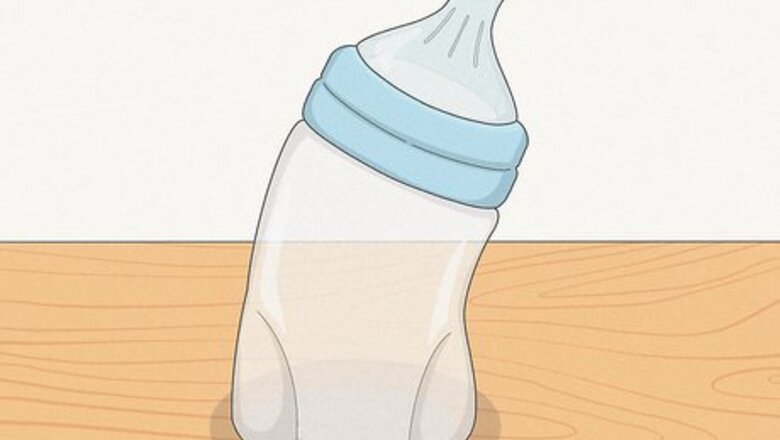
views
- Put the formula or breast milk into an angle-neck bottle with a slow-flow nipple. Stir or swirl the formula in the bottle to mix it together instead of shaking it.
- Hold your baby upright while feeding them. Position the bottle horizontally so the formula or milk fills the end of the nipple to stop your baby from taking in air.
- Take breaks while feeding your baby to burp them and get rid of excess gas. Stop feeding your baby once they’re full and turn their head away from the bottle.
Preparing a Bottle to Prevent Air Bubbles
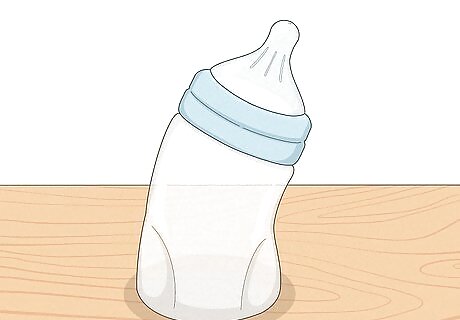
Use an angle-neck bottle to stop your baby from sucking in air. Choose a bottle that has a slight bend in the middle, which helps the breast milk or formula collect in the end of the nipple. Because the milk or formula completely fills the nipple, your baby won’t be able to gulp up as much air when they’re feeding. Try using a vented bottle with an inner straw that releases air bubbles from inside, or opt for a collapsible bottle that has a disposable plastic liner that compacts while your baby drinks.

Switch to a nipple with a slower flow rate. A slow-flow nipple prevents the milk or formula from coming out too fast, which could cause your baby to take in air during their mealtime. Start off with a nipple labeled with the number 1 to pick the one with the slowest flow. If your baby takes a long time to finish eating or the bottle nipple collapses, then move up to the next nipple size. Every baby is different, so don’t be afraid to try different styles and sizes of bottle nipples to see which one your newborn likes the best.

Stir or swirl the formula to mix it without forming bubbles. If you’re preparing formula and need to mix it with water, use a clean spoon or fork to break apart all of the clumps. Alternatively, hold the top of the bottle and gently swirl the formula around until it dissolves. That way, the formula won’t look foamy or have as many air bubbles as if you had shaken it. Mix the formula in a different container if it’s easier to stir that way. Just be sure to pour the formula slowly into the bottle so it doesn’t form air bubbles.

Let the bottle sit after mixing it to make air bubbles disappear. Right after you finish stirring the formula, set it down and leave it for a couple of minutes. The air bubbles will rise to the top and pop so they aren’t in the formula anymore. After that, you’re ready to feed your baby and have a happy mealtime. Tap the bottom of the bottle against a hard surface to help force the bubbles to the top.

Add gas drops to the bottle to help prevent gas buildup after feeding. Gas drops contain simethicone, which helps relieve gas and bloating in babies. Follow the dosage instructions on the package because they may vary by brand, and add the drops directly to your baby’s formula while you’re mixing it. Gas drops are safe to use for every mealtime. The only known side effects to gas drops are allergic reactions like rashes, itching, or swelling. If you notice your baby has any of these symptoms, stop using the drops and contact a doctor. Gas drops work best as a preventative measure, and they won’t be very effective if your baby already has gas.
Stopping Your Baby from Gulping Air while Feeding

Hold your baby in an upright position. When you’re getting ready to feed your baby, find a comfortable sitting position and nestle them up in the crook of your arm. Make sure to keep their head upright and slightly tilt their back so they’re sitting up. That way, your baby can drink the milk or formula slowly instead of taking big gulps with air bubbles. Avoid laying your baby down while you’re feeding them because they could choke on the formula or milk.
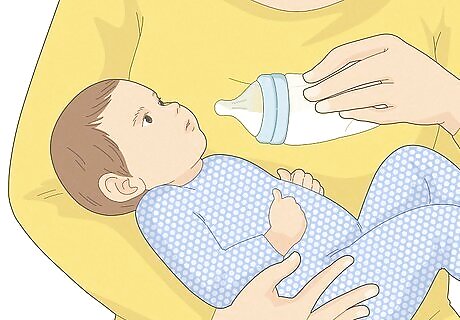
Tilt the bottle so the milk or formula fills the nipple. Hold the bottle horizontally so the milk or formula completely fills the end of the nipple. This helps prevent air bubbles from getting into the formula while your baby drinks so they don’t get as gassy. Holding the bottle upright could make the formula come out too quickly and cause your baby to gulp air while they’re drinking.

Check that your baby latches onto the base of the bottle’s nipple. As you’re feeding your baby, watch where they latch onto the bottle. If you notice they only have the tip of the nipple, then slowly guide it further into their mouth. That way, they form a good seal and don’t suck in any air bubbles while they eat.

Stop feeding your baby as soon as they’re full. If your baby closes their mouth or turns away from the bottle as you’re feeding them, it may be a sign that they’ve had enough to drink. They may also relax their hands or push the bottle away from them to signal they’re done eating. Don’t try to force a newborn to drink the entire bottle if they’re full because it could make them gassy or more prone to spitting up.
Relieving Gas

Burp your baby 2–3 times throughout a feeding session. After a few minutes of feeding, take the bottle out of your baby’s mouth and set it aside. Put a towel under their chin and sit them up on your lap, using one hand to support their chest. Gently rub their back with your other hand until they burp. Then, continue with feeding your baby. It’s completely normal for a baby to spit up a little formula or breast milk when you burp them. Just wipe up the mess and continue feeding them after. Be sure to burp your baby once you finish feeding them too.

Do bicycle kicks with your baby’s feet to work out gas. If your baby is acting fussy after feeding them, try laying them on their back and holding onto their feet. Slowly move their legs up and down so it looks like they’re pedaling a bike. Keep moving their legs around until they burp or relieve some of their gas.
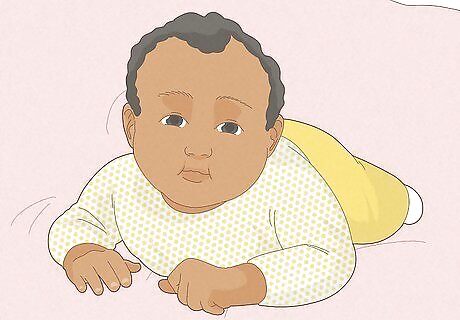
Give your baby tummy time to work out gas. Wait about 20–30 minutes after your baby finishes eating so the formula or milk settles in their stomach. Then, lie them on their tummy on the floor or on your lap. Laying on their tummy may help push out gas and help soothe your baby. It may also help to gently rub your baby’s belly to help break apart gas bubbles.
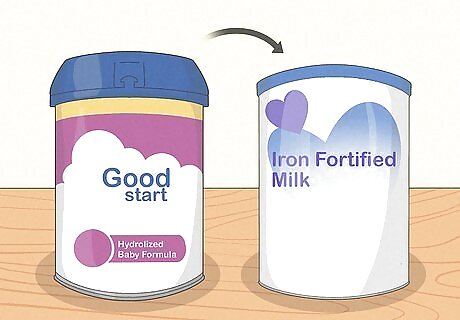
Switch to a different kind of formula. If your baby keeps getting gassy when you’re using one formula, it may help to try out a different brand or variety. Try going with a sensitive formula with lower lactose to prevent your baby from feeling uncomfortable and bloated when they finish eating. When you switch to a new formula, do it gradually. Start by mixing 1 scoop of the old formula with 1 scoop of the new formula for the first 2–3 days. Then, make the full switch to the new one.















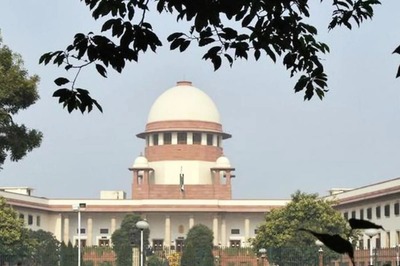
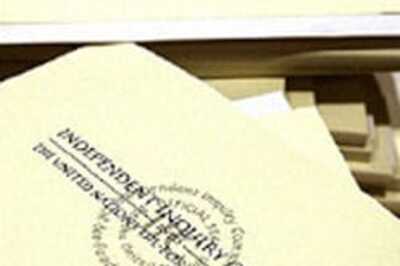
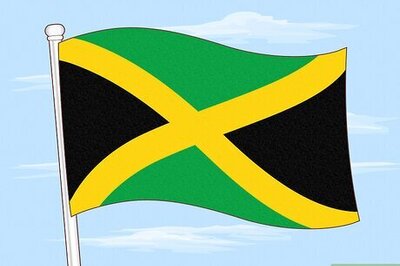

Comments
0 comment